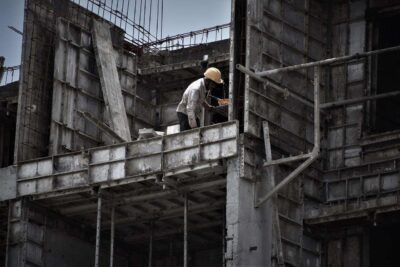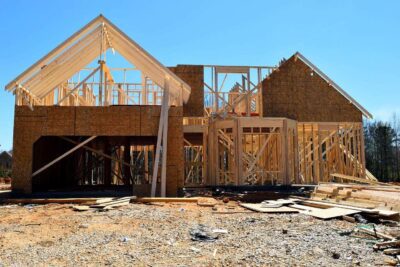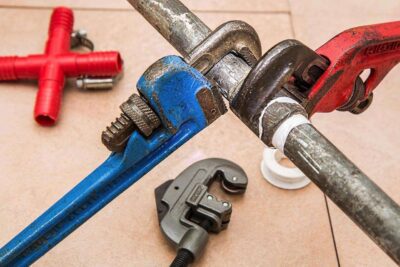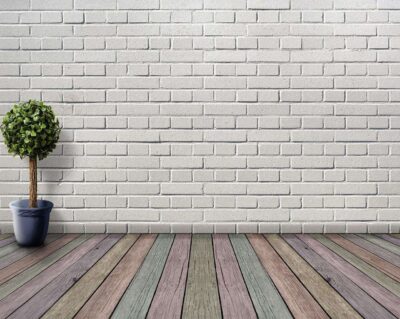When you step into a brand-new home, it’s easy to get swept up by the obvious beauty-shiny hardwood floors, sleek countertops, and freshly painted walls. But the real magic of a well-built home lies in what you don’t see. Behind every clean finish is a network of hidden systems and carefully installed materials working together to make the home safe, comfortable, and built to last.
These behind-the-scenes elements might not be flashy, but they’re the foundation of great construction and understanding them gives you an edge when building or buying your next home.
1. The Foundation and Substructure

Before the house even goes vertical, a solid foundation must be laid. That includes soil preparation, grading, and concrete poured with steel reinforcements.
Foundations also need proper drainage and waterproofing to prevent water from creeping into the house. We want to ensure your groundwork is done correctly to minimize any shifting floors, cracking walls, or moisture problems.
2. Framing and Structural Support

Think of the framing as the skeleton of the home-it shapes everything and holds it all together. It includes the studs on your walls, the beams across your ceilings, and the joists under your floors.
Framing ensures your home can handle everyday wear and tear, not to mention the stresses of wind, snow, or even minor seismic shifts. But done poorly? You could end up with sagging floors, cracked walls, or worse.
Good builders follow detailed structural plans and local building codes to get this right from the ground up. It’s not the most glamorous part of building, but it’s one of the most important.
3. Insulation: The Silent Energy Saver

You can’t see it once the drywall goes up, but insulation is one of the key ingredients to a comfortable home. It keeps the heat in during winter, the cool air during summer, and the energy bills manageable all year round.
Most homes use materials like fiberglass batts, blown-in cellulose, or spray foam. Done well, insulation also adds soundproofing, making your home quieter and more peaceful.
4. Mechanical, Electrical & Plumbing

These systems are the veins and arteries of your home. We’re talking about:
- Electrical wiring for lights, appliances, and outlets
- Plumbing for clean water and drainage
- HVAC systems for heating, cooling, and air circulation
All these systems are installed before the walls are sealed up, and it’s crucial that they’re done properly. Poor wiring, leaky pipes, or undersized ducts can cause long-term headaches—and costly repairs. A solid MEP setup is the difference between “move-in ready” and “never-ending maintenance.”
5. Waterproofing and Drainage

Water damage is one of the biggest threats to any home—and often the most expensive to fix. Hidden waterproofing measures like vapor barriers, foundation drains, and weather-resistant wraps protect your home from moisture intrusion.
Key areas like basements, bathrooms, and exterior walls need proper sealing and drainage to stay dry. Good builders takes time to ensure water is directed away from your home-not toward it.
6. Soundproofing You Didn’t Know You Needed

Soundproofing might not be the first thing on your checklist, but it makes a big difference in everyday comfort—especially in multi-level homes or shared walls.
Extra insulation in interior walls, staggered studs, or sound-dampening drywall can all help reduce noise between rooms. It’s a small investment that can dramatically improve quality of life.
7. Fire Safety Systems

Built-in fire safety isn’t something you think about until you need it—and then it becomes everything. Inside your walls are things like a fire-rated drywall, smoke detectors wired into your electrical system, and fire-blocking materials in the framing.
They might not be visible, but these features slow down fire spread and give you more time to respond. They’re designed to protect lives and property.
8. Energy Efficiency and Air Sealing

Air leaks can quietly drain energy and money. Builders use caulking, spray foam, and gaskets to seal up tiny gaps around doors, windows, and electrical outlets.
This helps keep your home airtight and efficient, making your HVAC system work smarter-not harder. It’s a behind-the-scenes upgrade with real, everyday benefits.
9. Smart Home Infrastructure

Modern homes are built with the future in mind. Even if you’re not setting up a smart home today, good builders will often install conduits or wiring for smart lighting, security cameras, or home automation systems.
It’s much easier—and cheaper to do this during construction than retrofitting later. So even if you’re not a tech geek, this is a smart investment for resale and convenience.
10. Pest Control Barriers

You won’t see them, but pest defenses are built right into modern homes. Things like termite barriers, mesh vents, and sealed wall penetrations help keep insects and rodents out before they ever become a problem.
It’s proactive protection that saves you from headaches later.
Who’s Building It Matters: Hoxton Homes
If you’re thinking of building, not all homebuilders are created equal. Hoxton Homes, based in Edmonton, is a great example of a company that focuses on getting the hidden essentials right— not just the finishes you see.
With their Urban by Hoxton Homes brand, they specialize in contemporary homes that are functional, sustainable, and beautifully designed ready to move-in homes from the inside out. Whether it’s energy-efficient insulation, high-end MEP systems, or future-ready smart home wiring, they build homes that are as strong behind the walls as they are stylish on the surface.
They don’t just build homes-they engineer lifestyles.
Final Thoughts
While it’s easy to focus on finishes and fixtures, the true craftsmanship of a residential build lies in the hidden details. From energy efficiency to structural integrity and future proofing, the elements behind the walls determine the comfort, safety, and durability of your home. If you’re planning to build or buy a home, understanding these hidden features can help you ask the right questions and ensure your investment stands the test of time.


